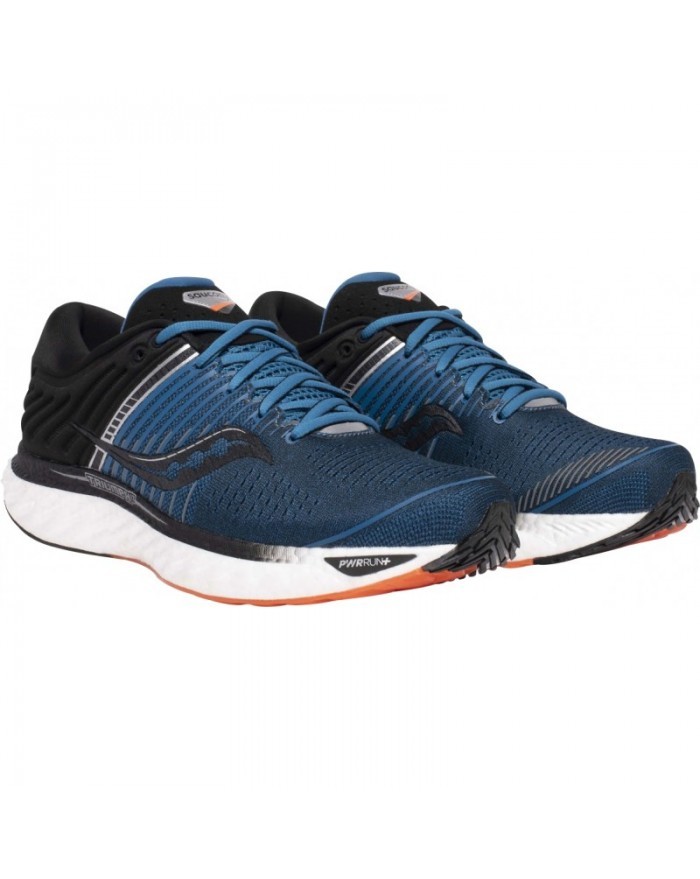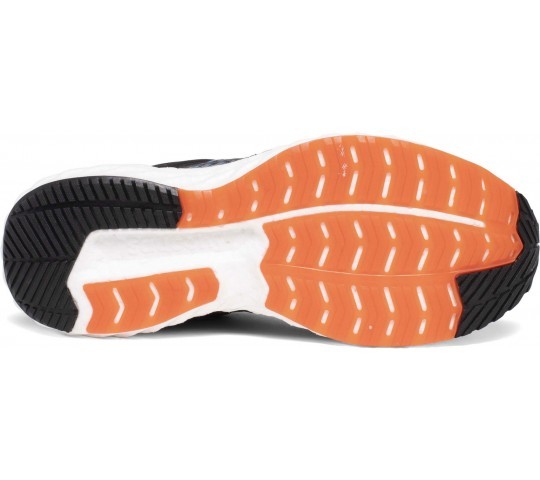Nitta’s monthly running shoe review
Posted on January 05, 2020Brief background on the Saucony Triumph 17.The Triumph has always been Saucony’s flagship mileage shoe. For Saucony enthusiasts it’s fair to say that the previous 2 models of the Triumph haven’t lived up to expectation (Triumph ISO 4 & 5). However in 2019, Saucony’s workhorse has had a complete makeover, and it may just be the update of year amongst all the running shoe categories.
So what is this shoe all about?
As previously mentioned, the Triumph is Saucony’s blue ribbon workhorse and sits next the like of top line neutral shoes (Asics Nimbus, Brooks Glycerin, New Balance 1080 etc). The midsole is truly the heart of this model, and unlike the everun foam (used in the previous models), the 17th version uses their new PWRRUN+ foam. This bead based midsole is still TPU, and gives this mileage shoe an increased cushioning feel but does not compromise the responsive feel. In fact, this compliant PWRRUN+ foam has created a much more reactive ride than the previous models. Saucony have claimed increased durability with their new TPU midsole material, and with only 250km in, while I cannot confirm, it still feels fresh!
Notable shoe attributes
First of all this shoe has reduced weight from it’s previous model, sitting at 298g (men’s size 9) and 266g (men’s size 8). However in 2019/20, this still remains on the ‘heavier’ side of top range shoes, but perceptually, it didn’t function that way. The midsole stack is 33mm (heel) and 25mm (forefoot), running a heel drop off 8mm (classic saucony mileage shoe). The triumph still maintains a nice sheet of everun beneath the sockliner for added comfort. The ISO fit used in previous models is now gone, however the 17’s upper is simplistic yet comfortable. The upper is made up of a engineered mesh, with a reinforced toe box and an extremely cushioned heel counter, in fact somewhat an overkill amount of foam is placed here (which I silently heard a whisper, disappears in the 18th model). The outsole rubber is firm at the reafoot and softer everywhere else and will not be the limiting factor to this shoes durability. This shoe runs very much ‘true to size’.


The good:
Well first of all, the PWRRUN+ midsole is magic. It gives this mileage shoe a sense of responsiveness that few mileage shoes can simulate. You can certainly use this shoe for easy runs, long runs and even pick the pace up without losing the enjoyment as the midsole perceptually returns more energy at pace than other heavyweight equivalents.
The not so good:
Well to be honest, I have to be picky here. If there were changes I were to make, it would be to reduce the amount of heel counter cushioning (we know that happens next model). Perhaps this shoe remains a little heavy (objectively), however personally, I didn’t find this a hassle.
Take Aways:
‘The Brooks Ghost had a baby with the Adidas Solarglide’ – this is how I first described the Saucony Triumph 17. The geometry of the midsole paints the picture of the Brooks Ghost, but with the new PWRRUN+ TPU foam it perceptually rides quite similar to a Boost midsole (found in Adidas).
This shoe is hard not to enjoy. It appears durable, it’s responsive and due to the midsole plantar surface area being nice a broad – it remains stable. When referring for this shoe, it’s best used a workhorse for runners who want a responsive yet stable ride. Due to the increased compliancy of the PWRRUN+ TPU midsole, the response is high but it may lose a bit of stability compare to say a Brooks Ghost. The midsole may work best for those runners who have a body weight below 85-90kg, and those runner’s who are becoming more experience and would like to move away from other traditional mileage shoes, this may be an enjoyable transition. Most of all, I’m looking forward to this PWRRUN+ midsole moving into Saucony’s performance range of 2020.
By Nitta
Sports & Arthritis Clinic (SPARC)
Certified Sports Podiatrist

